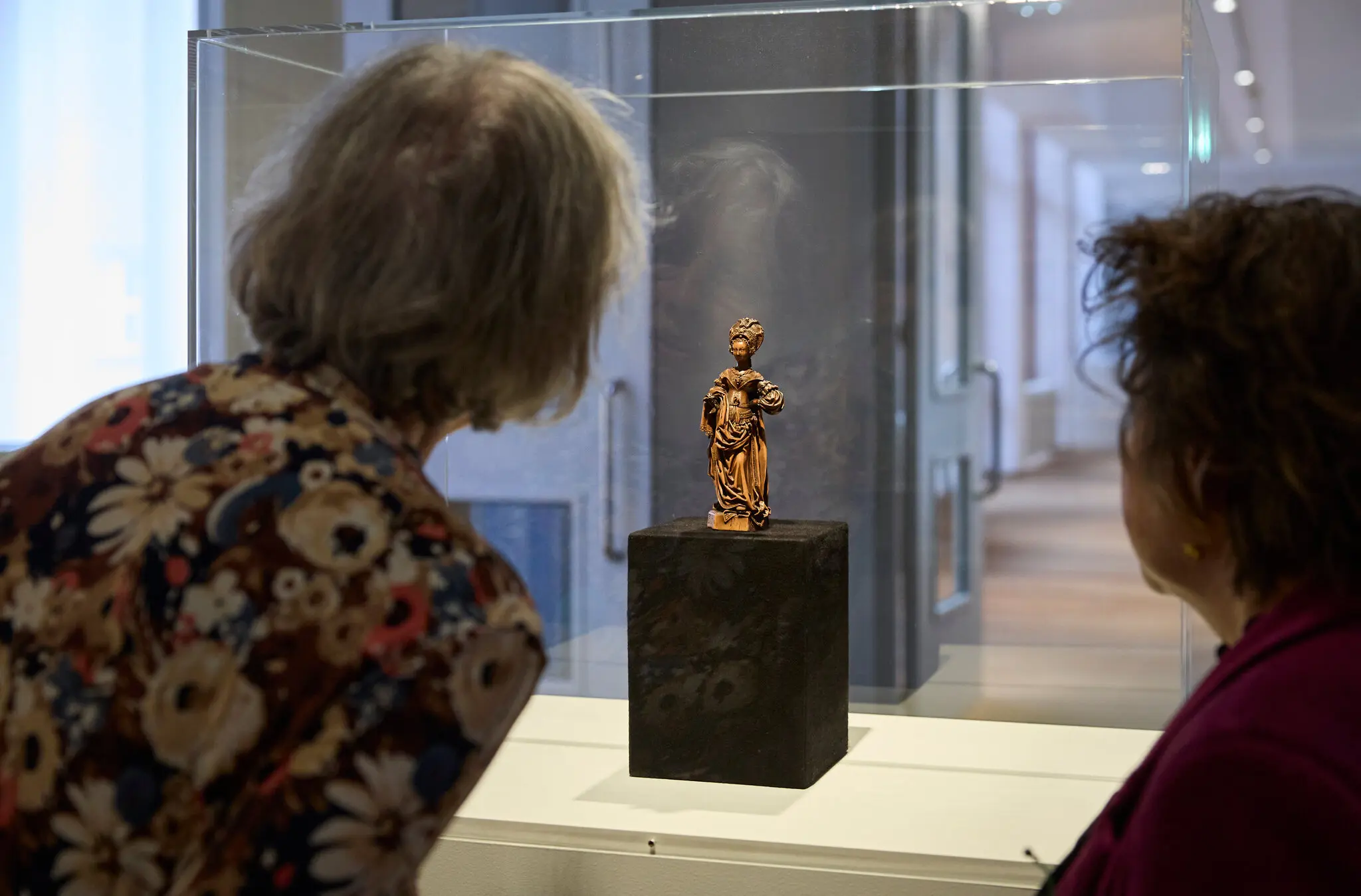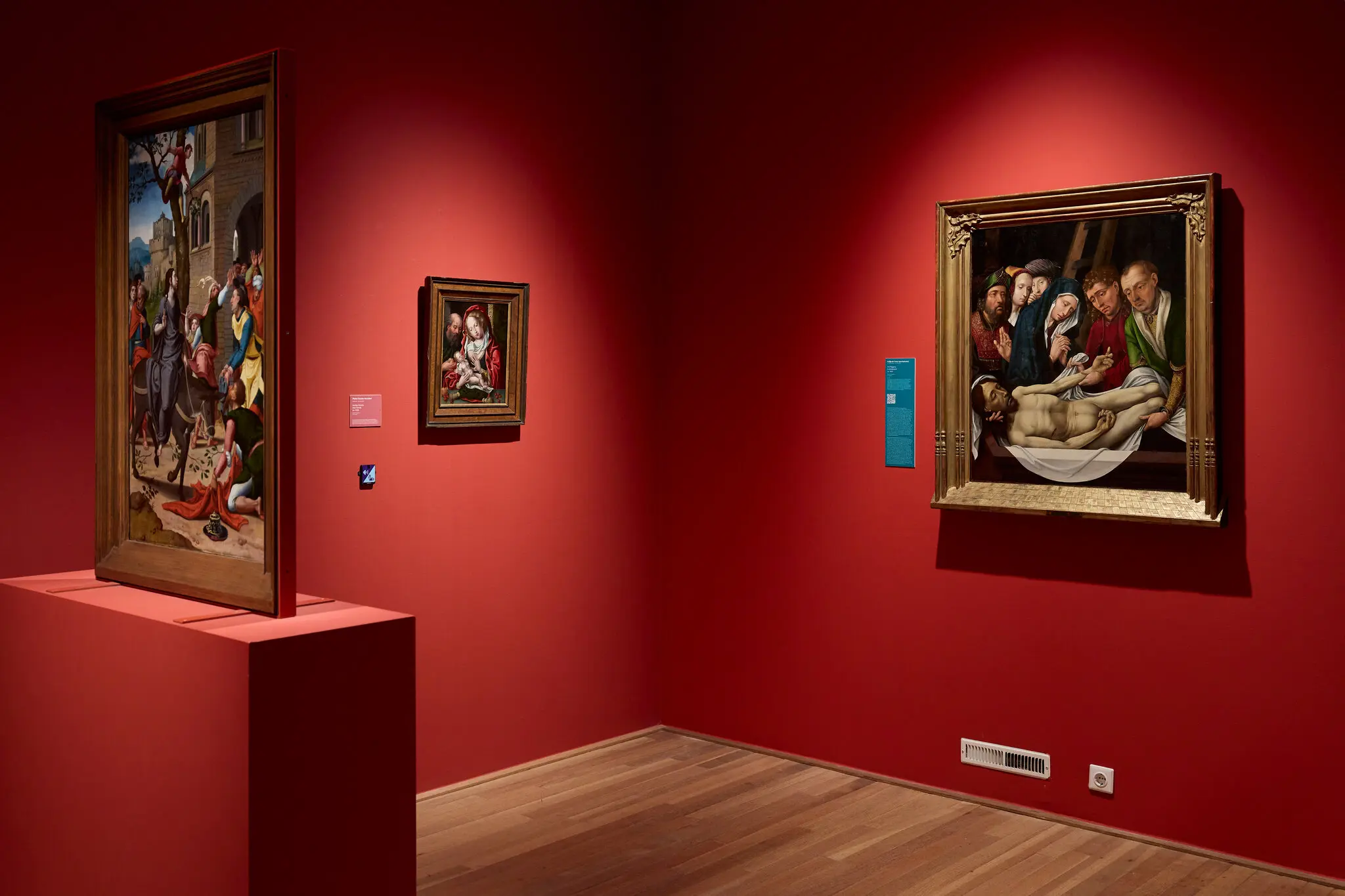News:
A Dutch Museum Tells the ‘Hidden Story’ of Looted Art Works
By Nina Siegal
Reporting from Maastricht, the Netherlands
A little boxwood sculpture, “Richly Dressed Lady,” offered at the European Fine Art Foundation’s annual fair here in 2020, was a real find for the Bonnefanten museum, known for its rare collection of early Netherlandish pieces, along with its Renaissance artworks.
After the museum purchased the work, a restorer did a thorough cleaning, revealing the signature of its maker, Jan van Steffeswert, a woodcarver from the local region, Limburg. The museum was able to date the piece to 1510, and proudly added the newly attributed Renaissance sculpture to its collection.
But the little statue, a little more than seven inches tall, still had more secrets to tell.
In 1938, “Richly Dressed Lady” was looted from the Rothschild family in Vienna, when the Nazis seized the Jewish family’s possessions. No one at the Bonnefanten knew this when they bought it — and finding out was a painful process for the museum.
The boxwood statue is now on display at the Bonnefanten in “Art Adrift,” a show of some 20 works from the museum’s collection. Each tells a “hidden story,” which has some connection to Nazi looting and art sales to Nazis, both voluntary and involuntary, around World War II, said Jip van Reijen, the museum’s curator of old masters.

“Richly Dressed Lady,” an early 16th century sculpture, was the subject of an investigative story in a Dutch newspaper. That story kicked off the museum’s efforts to reckon with the origins of its art
“Art Adrift,” which will run until Nov. 3, partly represents the museum’s effort to grapple with its own complex connection to looted art, and to call attention to the complexities of restitution today, nearly 80 years after the war’s end.
“We’re trying to be as transparent as possible,” said the Bonnefanten’s director, Stijn Huijts. “Not to hide the fact that some of these works have this history and to also show some of the complexity that can be a part of it.”
Tens of thousands of artworks left the Netherlands during World War II via Nazi activities, including confiscation and robbery, according to the Netherlands Art Property Collection, known as the NK Collection. Many ended up in the personal collections of Adolf Hitler and the art-loving Reichsmarschall Hermann Göring. After the war, the Allies found these pieces and others hidden in places like the salt mines of Altaussee, Austria, and worked to return them to their countries of origin.
In the Netherlands, a specialized agency made efforts to find the original owners of the art that had been returned until 1951, and the remaining works went into the NK Collection. Then they were given on loan to the state’s public museums.
The Bonnefanten turned out to be one of the main beneficiaries of the circumstances, Ms. van Reijen said. At one point, said Mr. Huijts, the museum had some 200 works on long-term loan from the NK Collection. Over the years, a number have been returned, but today, the museum still has 132 paintings on loan from the NK, Ms. van Reijen said.

As part of its effort to grapple with looted art, the Bonnefanten museum has added new wall labels next to works in its permanent collection, describing each piece’s wartime history.
“We really depend a lot on this collection,” said Ms. van Reijen, adding that this art gave “the basis collection of the old masters a bit of body, because there was not a lot in our own collection. So, we’re quite closely knit to this NK Collection.”
The Bonnefanten hasn’t always been so forthcoming about its connection to Nazi looted art. In 2006, when the Dutch Restitutions Committee ruled for the restitution of 202 works to the heirs of Jacques Goudstikker, a Dutch Jewish art dealer whose inventory was sold illegally to Göring, more than 35 came from the Bonnefanten’s walls.
The museum’s director at the time, Alexander van Grevenstein, publicly opposed the decision, saying in interviews that the works were “Dutch cultural heritage, after all,” and demanded financial compensation for the loss.
While acknowledging this history, the Bonnefanten’s current director said the museum’s attitude is different today. “It’s really important that whenever you have something in your custody that doesn’t belong to you, it should go to the rightful owner,” Mr. Huijts said.
Ms. van Reijen said she first became interested in the museum’s possible links to Nazi looting in 2022, after the Dutch national newspaper NRC Handelsblad ran an investigative report about “Richly Dressed Lady.” It charged that the Bonnefanten had “made little effort to find out” who the statue had belonged to, with a headline reading “The Museum Should Have Known.”
As it turned out, the statue had in fact been returned to the Rothschilds after the war, and they had sold it at auction in New York in 1948. The Bonnefanten’s purchase of the work at TEFAF was legal, but nonetheless it served as a warning for Mr. Huijts.
“For us it was a very unpleasant experience, because due to a variety of circumstances, we had not done enough provenance research,” he admitted. “We could only say, the museum is to blame if you don’t dive into it deeply enough.”
Ms. van Reijen, who’d just started her job at the Bonnefanten when all this was happening, decided to dive in. That was the genesis of “Art Adrift,” she said. The museum also added new wall labels next to many NK works in the permanent collection, which now also narrate their wartime history.
“Something happened to all of these paintings and statues during the Second World War,” Ms. van Reijen said. “It’s a very interesting story. We mostly talk about the way that an artwork was made, but it has survived hundreds of years, and it has gone through a lot.”
Now, she said, new Dutch rules require all museums to conduct thorough provenance research for any work of art that changed hands from 1933 to 1945. The exhibition, she added, might also help raise awareness.
“All of these works can be claimed,” Ms. van Reijen explained. “If you are curious or see a painting and think, maybe my grandmother had that somewhere, you can make a claim. We want to actively involve people, so they know where to search.”


